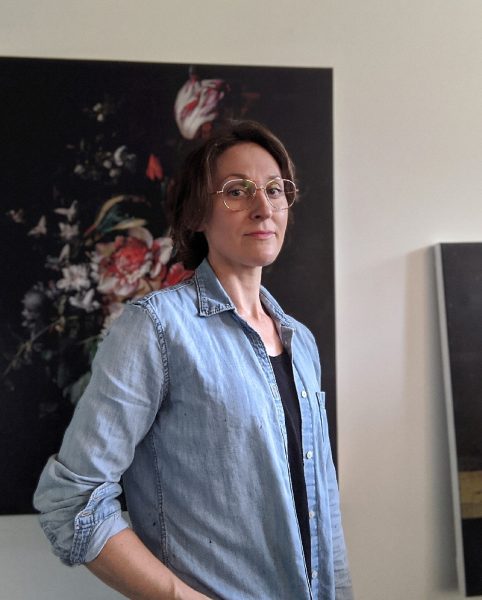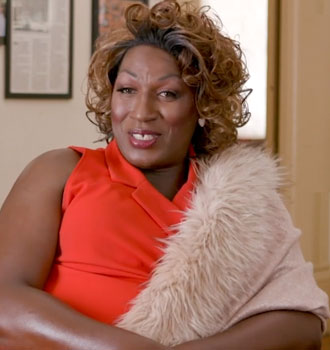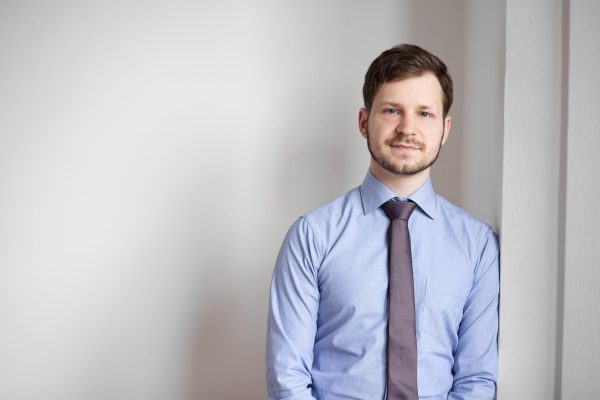Performing Across Media: Theater, Dance Seniors on Their Culminating Shows
In a Zoom conversation punctuated by laughs, co-op knocks, and vigorous nods, College fourth-years Evelyn Morrison, Anna Aubry, and Lauren Elwood gathered to speak on their forthcoming senior performance pieces in the Dance and Theater Departments. The three each decided to create full-scale productions, which appear in an array of innovative forms. This discussion explores the restrictions and opportunities of socially distanced art-making, the necessity and joy of collaborating with fellow students, and the inspiration they draw from one another’s work — read on to be inspired and enlivened by their conversation.
This conversation has been edited for length and clarity.
First off, tell me about your shows!
Lauren Elwood: My show is titled Big Spender: Camming, Fosse, and All That Jazz. It follows nine cam models throughout a 30-minute musical theater dance film. It’s basically a revue, filmed — a musical revue is where you take songs from all over the place and stitch them together and it creates a somewhat cohesive story or is centered around a theme. So, mine is set in the world of camming. We also have devised monologues from many of my actors. It’s a little bit of everything
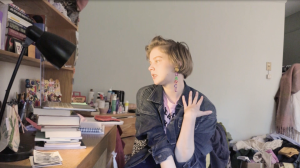
Anna Aubry: My play is called FUNNY GIRL., and it’s a one-woman show that I have written and will be performing in, directed by [College third-year] Clara Zucker. Basically, the story follows a fictionalized version of myself when she finds herself in therapy for the first time, trying to answer the question: When did she get to be so scared of everything? She ends up going back through a number of moments in her life to try to answer that question. The whole thing really asks what is performance and what is reality, both within the world of the play and for audience members watching. As the story goes on, “Anna’s” narrative kind of begins to unravel, and she loses control over her own stories and what she’s told herself they mean to her.
Evelyn Morrison: My piece originally started as a rumination on my two majors – Dance and Neuroscience – with a desire to explore the idea of fragmented consciousness. I wanted to explore these different states of being which circulate and are never fully complete, operating in this recursive pattern of mental time and mental space. It has evolved a bit to be different distinct sections and threads that culminate in the question of what is at the center of it all? It’s not supposed to answer that, but to take the audience to that space of in-betweenness, and then to slowly take them out of that. It might very well change in the process, but that’s where I’m at right now.
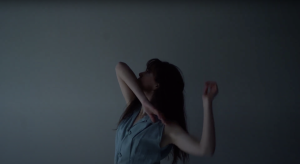
It’s such a typical question for this time, but I’m genuinely curious in terms of how this can be interesting, and generative, and a real challenge — how have you conceptualized your projects under the restrictions of COVID-19?
LE: I decided to do a fully digital show, which I don’t think I realized quite the implications for choreographing until I was in it. Since the show itself was specifically directed to the camera, with it being about camming, I did a lot of recording myself doing it to the camera and fine-tuning it as I went along. I have so many gigabytes on my laptop and on my phone of me just recording myself over and over again. By the end that’s how I took notes as well, by just videoing and videoing and videoing. I couldn’t write it anymore — I couldn’t describe it anymore.
EM: My show is intended to be — recognizing that there might be impediments to that — in-person with a limited live audience. I feel very lucky that it’s a possibility. With that in mind, I’m really hoping to proceed as similarly to a normal show as I can. Of course, all seven dancers will have to be wearing masks when we dance. We always focus on the body, but the face has so much expression, and that’s something I really wanted to bring out. I’m hoping to offset the invisibility and anonymity of the masks with some more personal video work. Another challenge is that with dancing and COVID-19, we have to be six feet apart or more. Having no partner work, and no close misses of bodies passing each other really restricts choreography. So I hope to be working a lot with unison, with patterns across space, but also with bringing bodies together through different mediums — having bodies that are separate physically but united in shadow with different angles of lights, or having duets between a video and a dancer onstage. Which could also be the same dancer, in person and on video.
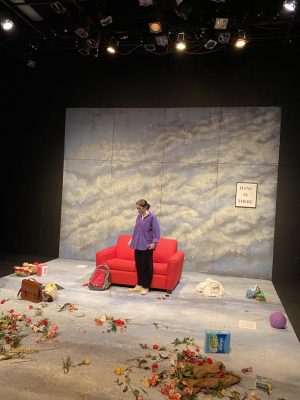
AA: I think I really lucked out because I decided to put on a one-woman production before COVID-19 happened. Since I knew, and the department knew, that I was going to be the only one on stage, at each step of the process they somehow let me continue. I will not be wearing a mask in the show — tech and crew will be double-masked — but because of that none of the tech members can come within 10 feet of me, so a lot of original writing where they act as a silent ensemble had to be cut, and in every transition moment where something has to be brought on stage we’ve had to very delicately choreograph where I and they can stand. The maximum number of people in the theater at once is 15, so thankfully I’ll be able to invite a couple of close friends to watch us film the production. There’s nothing like live theater — and also it’s a comedy, so there’s no audience to laugh or feed off of at all — but, even with the small audience I have, that’s the closest the department is getting to live theater this year. Even just having rehearsals in Kander [Theater], a black-box theater, feels so special at a time like this.
I would imagine masterminding a show like this is both personally difficult, but also involves managing and collaborating with a lot of other people. What might people not know about that process? What’s been surprising or challenging?
EM: Definitely daunting, to be the ‘mastermind’ of a big project when you start with an idea but know that might well change. I find that the collaboration part takes way more time than you ever anticipate it taking. That clear outlining is so hard to do well, especially working with a medium you’re not very familiar with — communicating with musicians, or lighting designers.
LE: My show also heavily leans on collaboration and back and forth. I wanted input from all of my team — it was one of my larger goals of the whole process. I have a music director, I have an assistant director who’s done a lot of devising. I also had all of my actors create monologues based on the characters that they created. I also had an artistic director and costume designer who individually talked with every single one of my cast members, and created backdrops for them and lighting design and costumes for everyone — remotely. I didn’t want it to be one singular vision.
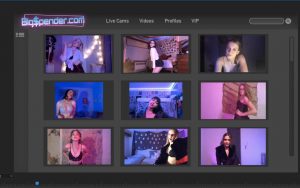
AA: Collaborating with others has been the most fulfilling part of this project, which for a one-woman show is not necessarily what you’d expect. The fear for six months, as I was writing this in a cave of my childhood bedroom not showing it to anybody, was like, “Clara’s not going to want to direct this, who would want to work on this project, I have no idea if any of these words are making sense.” She was the first person I sent it to, and she was like, “I am on board, I’m obsessed with this.” And then starting rehearsals with our stage manager [College fourth-year] Alex Howell, it felt like the first moment that the play started coming to life. I was like, OK, there are other people who must also believe in something about this project to dedicate so much time to it. Ultimately, creating with this group of 10 people is truly what has made it feel the most warm and fuzzy.
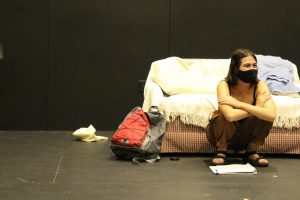
EM: I’m also having [College fourth-year] Olivia Guerriero do some creative writing for my piece, some poetry that I’m hoping to interweave with the dance segments in voice-over. With dance in particular, when you put words with it, they have to be so meticulous and so specific. When your primary language is movement — which is much more abstract than words because everyone understands what words mean — when you also include something that clear, it needs to be really intentional. We’ll be doing a lot of back and forth with me showing my dance work, and them writing, and me directing what I want it to mean.
Any final thoughts you’d like to leave us with?
AA: I feel like every artist on the planet has said this right now, but during COVID-19, there was really a point where it felt so sad seeing theater just crumbling everywhere all over the world. It’s so hard to find inspiration right now — the fact that we’ve been given the resources and all of us have jumped in, I think is really cool.
LE: Although parameters are annoying and painful at times, they can be a guiding hand. I’m so grateful for the energy everyone put into the process. I’ve been so inspired to see Anna’s show, and am so excited to be part of Evelyn’s. I love art, I miss art, and I love what we’ve been able to do.
Lauren Elwood’s film, Big Spender, will run from Feb. 19 to Feb. 21. Reserve viewing access in advance here.
Anna Aubry’s play, FUNNY GIRL., will premiere on March 19.
Evelyn Morrison’s dance show will run from April 16 to April 17 in Warner Main Space.








